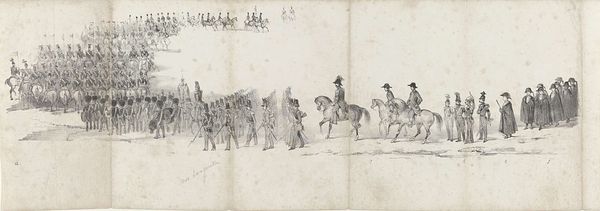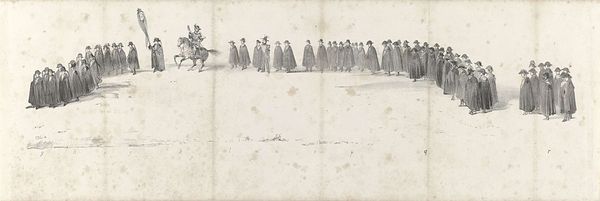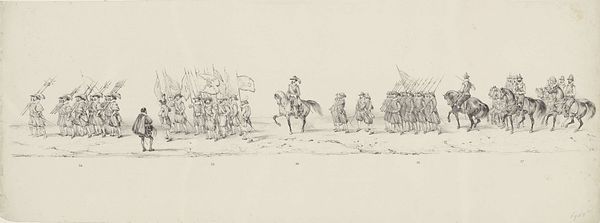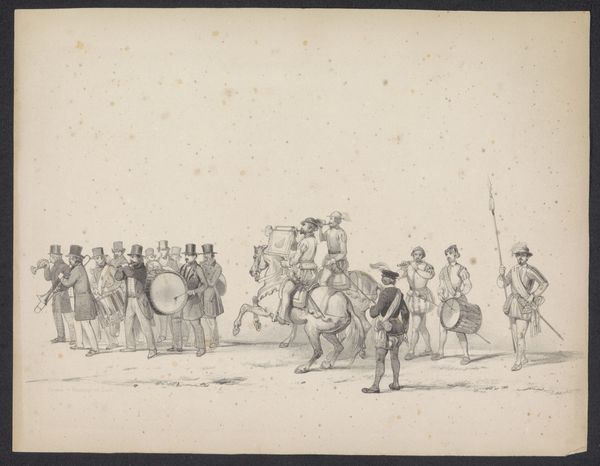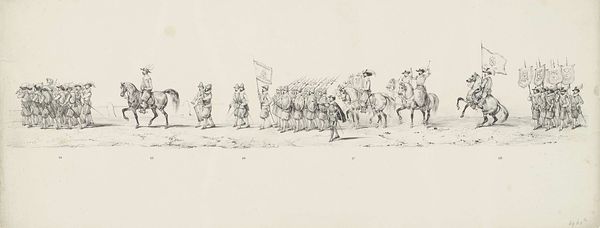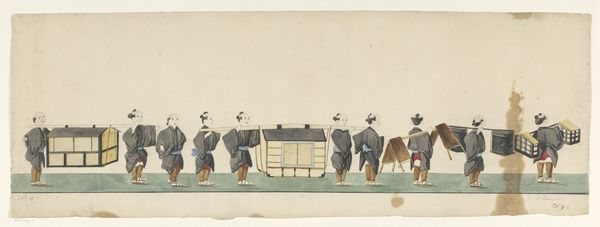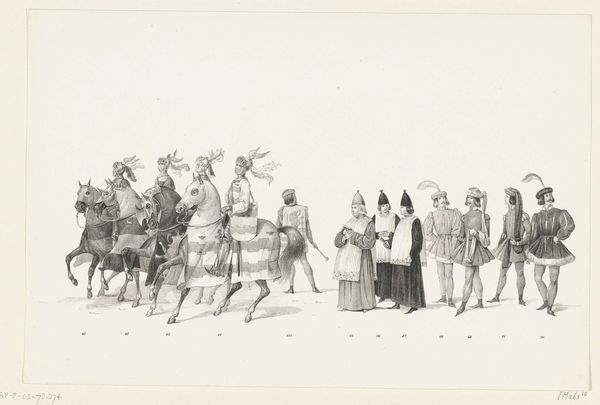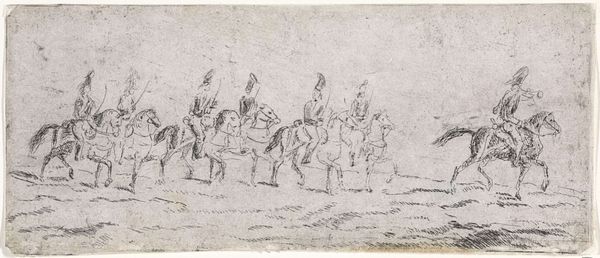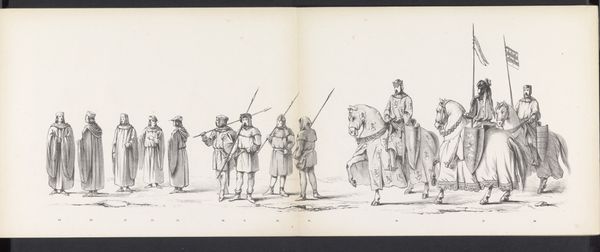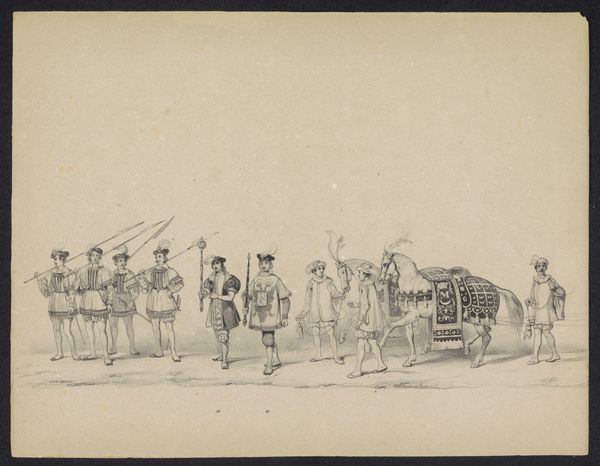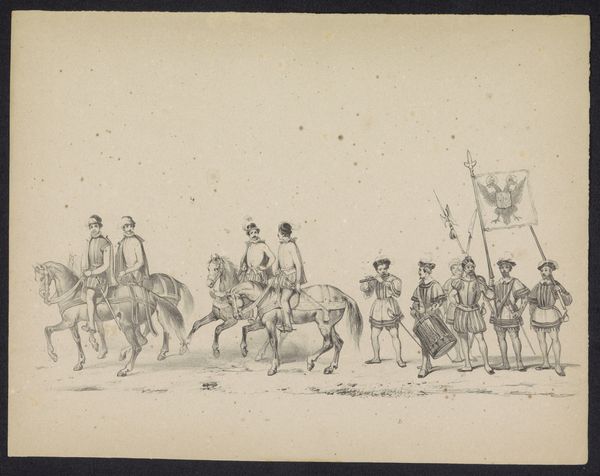
Begrafenis van wijlen koning Willem II te Delft op 4 april 1849 (blad 3) 1849
0:00
0:00
drawing, ink, pencil
#
drawing
#
16_19th-century
#
narrative-art
#
landscape
#
figuration
#
ink
#
romanticism
#
pencil
#
genre-painting
#
history-painting
#
academic-art
#
realism
Dimensions: height 170 mm, width 500 mm
Copyright: Rijks Museum: Open Domain
Editor: So, this drawing, "Begrafenis van wijlen koning Willem II te Delft op 4 april 1849," is an anonymous piece from 1849, rendered in ink and pencil. It has a very formal, almost austere feel to it. The figures are so carefully delineated. What captures your attention most when you look at it? Curator: Well, for starters, the rather sparse use of line is so evocative, isn’t it? It’s almost like witnessing a half-remembered dream of royal solemnity. It is romantic in a certain sense. What do you see here? A landscape? A portrait? Not exactly either! Editor: Not really. It seems almost… like documentary art, even. Curator: Precisely! Think about photography emerging as a new form in this time. An artist may turn to those values. This artist seems to use a technique reminiscent of early photographic methods. So, the anonymity, the date-specific title... It speaks volumes about how the concept of authorship and record-keeping was in flux. What sort of feeling comes to mind when you look at the work? Editor: Melancholy, definitely. All those figures in mourning… And yet, there’s also something oddly beautiful about its simplicity, don’t you think? Curator: Yes, exactly. Almost stark, a study in grief etched in the simplest possible way, hinting at profound feeling with immense restraint. That juxtaposition… I find that endlessly compelling. Something we still relate to now. Editor: It's definitely given me a new appreciation for how much history a simple drawing can hold. Curator: Indeed. It invites a bit of reflection. Art holds up a mirror to how society, the world, sees itself at one particular time. What is revealed when we dare look?
Comments
No comments
Be the first to comment and join the conversation on the ultimate creative platform.


